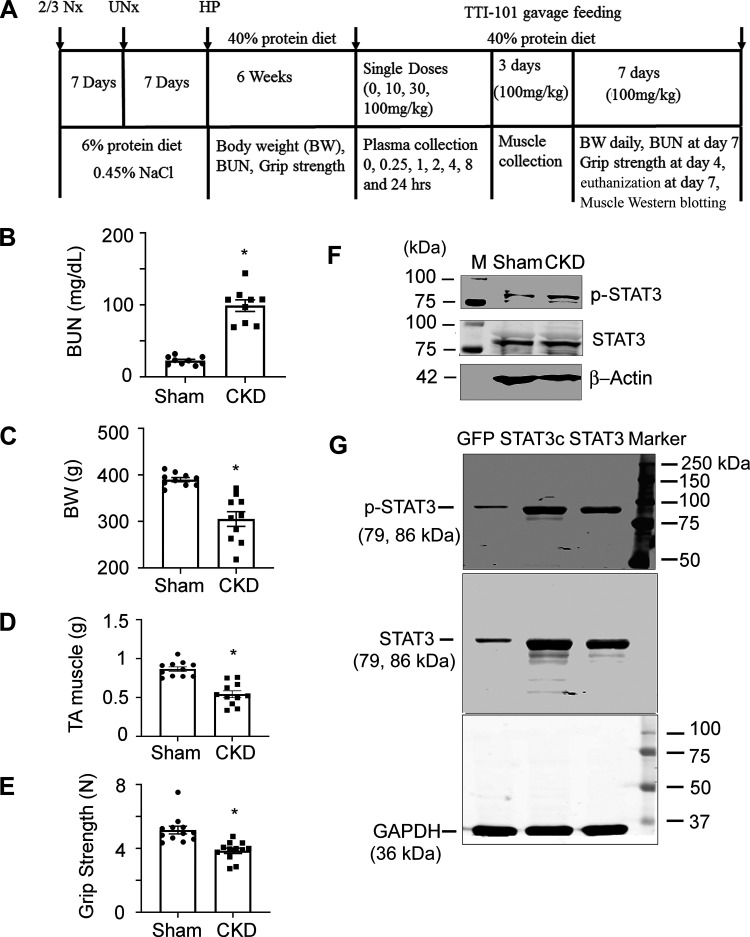Fig. 1.
Schematic and details of the chronic kidney disease (CKD) protocol and its characteristics in CKD rats versus sham control rats. A: details and timing of the CKD protocol and TTI-101 treatments. Rats with CKD exhibited high blood urea nitrogen (BUN) levels (B) and had decreases in body weight (BW; C) and weight of tibialis anterior (TA) muscles (D) as well as reduced grip strength (E) versus sham control rats. F: TA muscles of CKD rats had high expression of phosphorylated (p-)STAT3. G: antibodies to p-STAT3 and STAT3 were verified using lysates of C2C12 cells that were transfected with labeled plasmids. Antibodies against p-STAT3 or STAT3, which yielded bands of the correct molecular weight (79 and 86 kDa, respectively) and high level expression were found in constitutively active STAT3 (Stat3C)- or STAT3-transfected cells. Data are shown as means ± SE; n ≥ 9 rats in each group. *P < 0.05 vs. sham control rats.

